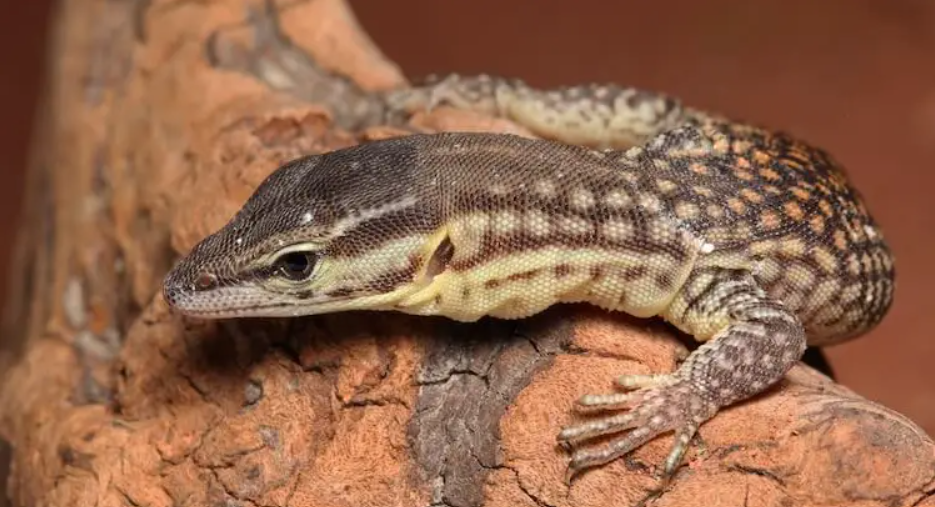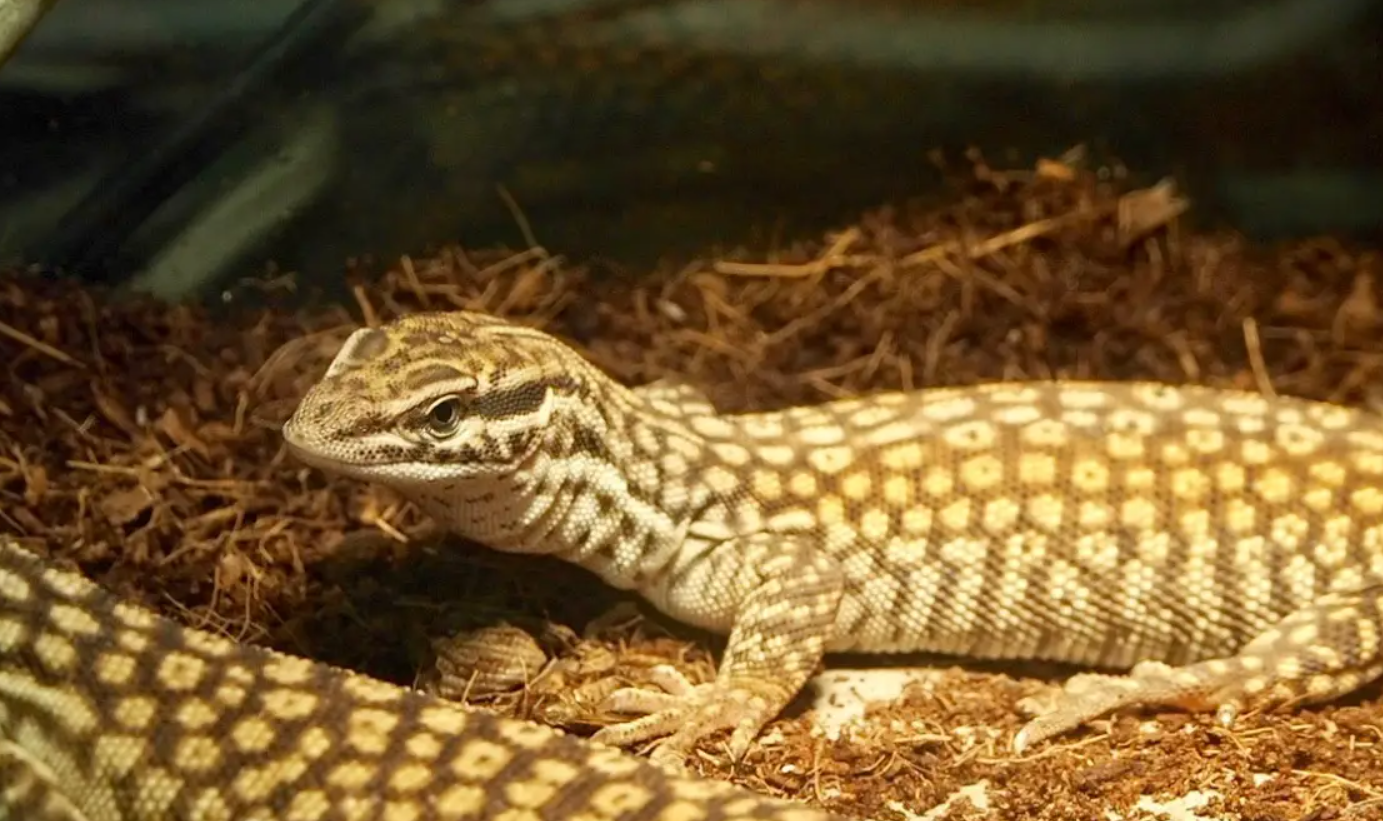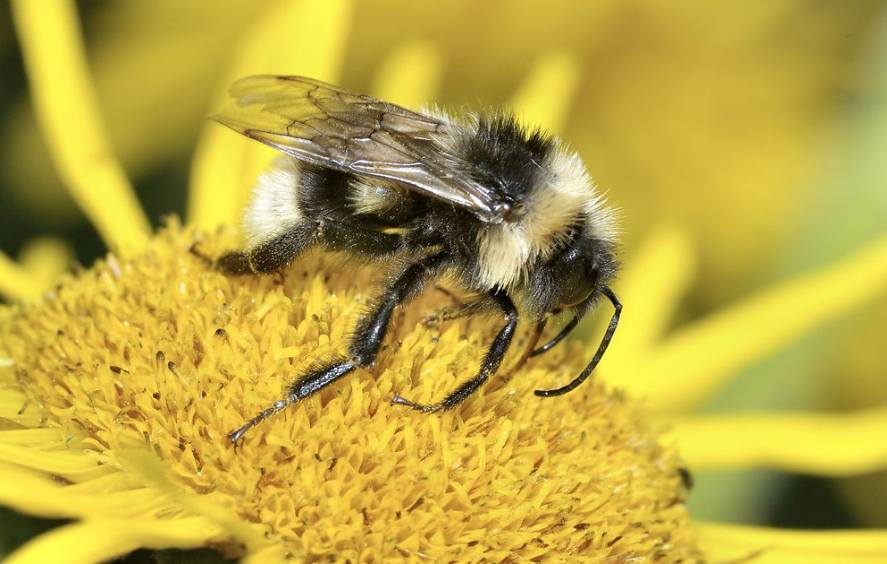
Fascinating facts about Ackie Monitors
The interesting reptiles known as Ackie Monitors, or Varanus acanthurus in scientific parlance, are indigenous to Australia’s dry areas. Because of their distinctive look and fascinating behaviour, reptile aficionados are very interested in these tiny to medium-sized lizards. Because of their eye-catching colours, sturdy physique, and curious disposition, Ackie Monitors are fascinating pets.
Distinctive physical features of the Ackie Monitor
Ackie monitors may be distinguished from other reptiles by their unique look. With a stocky form and a tail that makes up almost two-thirds of their whole length, they normally reach a maximum length of two to three feet. Their remarkable patterns on their scales, which come in hues of red, orange, and yellow, help them blend in well with their surroundings. With its distinct look and small size, the Ackie Monitor is an intriguing reptile. Only seasoned reptile keepers should consider keeping them as pets since they need specialised care and attention.
Ackie Monitors are native to Australia and are also known as Spiny-tailed Monitors
Ackie monitors live in the dry areas of Western Australia in the wild. One prominent feature of their adaptation to the harsh desert habitat is their burrowing tendency. These lizards dig elaborate tunnels under the earth to protect themselves from harsh weather conditions and potential predators. They can regulate their body temperature by using their burrows as a thermoregulation mechanism.
Dietary preferences of Ackie Monitors
Being a diurnal species, ace monitors are active throughout the day. They often exhibit a variety of behaviours that enthral their owners, and they are renowned for being bright and inquisitive animals. These lizards are skilled climbers and are often seen soaking up the sun’s warmth by sunbathing on rocks or trees.
Diet and Feeding Habits facts about Ackie Monitors
Ackie monitors are opportunistic eaters when it comes to eating. They eat a variety of things, including birds, insects, small animals, and even other reptiles. For their health and welfare, captive animals need a well-balanced diet of gut-loaded insects like roaches and crickets, sometimes supplemented with small rodents.
Information on the ideal enclosure setup for keeping an Ackie Monitor as a pet
Ackie Monitors are fascinating reptiles that provide a unique experience when kept as pets. Reptile aficionados like them because of their remarkable beauty, intriguing behaviour, and manageable size. But it’s vital to remember that these lizards need certain maintenance and a good environment to survive, so doing your homework and being ready are essential before thinking about getting them as pets.

Interesting facts about the Ackie Monitor
Varanus acanthurus, the scientific name for the Ackie Monitor, is a small to medium-sized lizard that is indigenous to Australia’s desert areas. This intriguing lizard, also called the Spiny-tailed Monitor, has become more well-known among reptile aficionados because of its unusual look and small size. We’ll look at a few fascinating Ackie Monitor facts in this blog article.
1. Distinctive physical features of the Ackie Monitor, such as its spiky tail and rough scales
Male Ackie Monitors are somewhat bigger than females, and they often reach a length of two to three feet. Their popular name comes from their spiky tail, which gives them a stocky physique. They have black patterns on their scales, which vary in hue from reddish-brown to orange or yellow. Their markings aid with their environmental integration.
2. Ackie Monitor’s appearance, size, and natural habitat
Habitat parts of the Northern Territory and the dry areas of Western Australia are home to Ackie Monitors. Their preferred natural habitats are hollow logs, termite mounds, and rocky outcrops. Being skilled climbers, these lizards are often seen sunbathing on rocks or tree branches.
3. Nutrition consists of insects, small mammals, and occasionally fruits.
Acckie As carnivorous reptiles, monitors consume a wide range of animals. Their main sources of food include tiny rodents, insects, and other reptiles. They may be fed mealworms, roaches, crickets, and tiny mice while they are in captivity. To guarantee they get all the nutrients they need, it’s critical to provide a diversified diet.
4. Behaviour: Being diurnal, these lizards are active throughout the day.
They are renowned for being observant and inquisitive, often investigating their environment. Additionally, compared to other monitor species, ackie monitors are considered to be quite gentle, which makes them ideal pets for knowledgeable reptile keepers.
5. Information on the ideal enclosure setup for keeping an Ackie Monitor as a pet.
It’s crucial to give Ackie Monitors a roomy cage that closely resembles their natural environment while keeping them. The perfect terrarium has branches for climbing, plenty of hiding places, and a tight-fitting top. During the day, the temperature should be kept between 85 and 95°F, with a cooler space for them to retire to. UVB illumination is also necessary for their general well-being. We can guarantee the welfare of these wonderful animals in both captivity and the outdoors by comprehending their natural environment and behaviour.
6. Reproductive behaviour of Ackie Monitors
Ackie Monitors mature sexually between the ages of two and three. The female will deposit a clutch of six to twelve eggs, and breeding normally takes place in the warmer months. The incubation of the eggs lasts between 90 and 120 days, depending on the temperature. It is crucial to remember that raising Ackie Monitors may be difficult, and only knowledgeable breeders should attempt this.
7. Legal Considerations and Conservation Status
As of right now, the Ackie Monitor is not considered a threatened species. Their number in the wild, however, may be threatened by habitat degradation and collecting for the pet trade. Appropriate captive breeding initiatives support both the preservation of these reptiles and the decline in the market for specimens taken from the wild.


